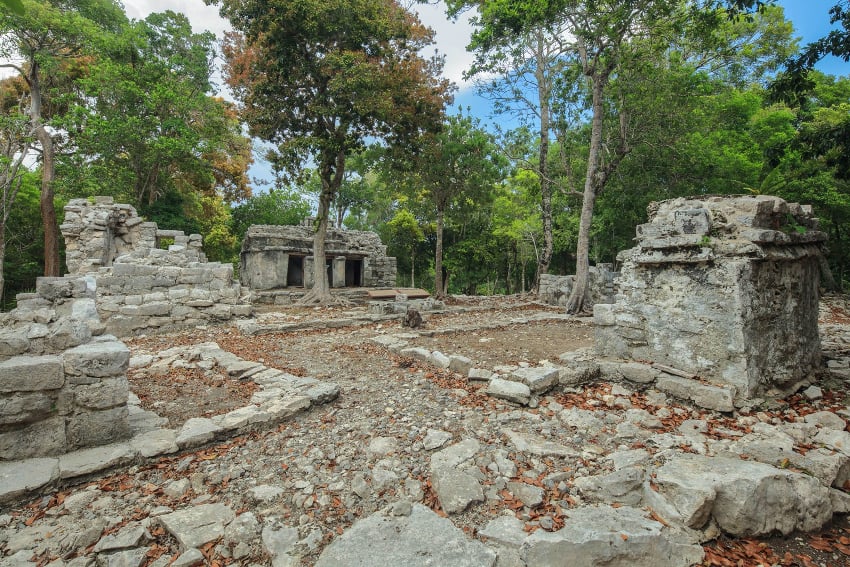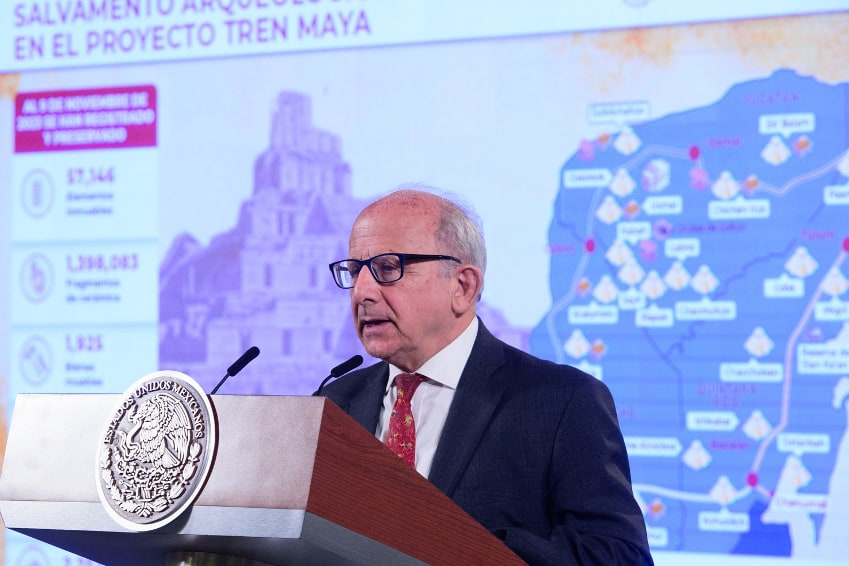Archaeological rescue work ahead of the Maya Train construction has turned up another remarkable find in Chichén Itzá – a well-preserved sculpture of a Maya warrior head, in a helmet shaped like a feathered serpent with open jaws.
The head was discovered on Tuesday in Maudslay’s Temple 6, in the Casa Colorada complex of Chichén Itzá, in Yucatán, as part of the Program for the Improvement of Archaeological Zones (Promeza).

The 33 centimeter-high sculpture appears to date from the earliest period of habitation of Chichén Itzá.
Speaking at President López Obrador’s morning press conference, the head of the National Institute of Anthropology and History (INAH), Diego Prieto Hernández, described the head as a “very interesting find.”
“It was customary to represent warriors with a headdress, with a kind of helmet,” he said. “In this case it is a snake figure from which the face of this character emerges, and a feathered headdress, so it is probably alluding to Kukulcán, the feathered serpent of the Maya.”
Just last week, INAH archaeologists discovered a circular temple dedicated to Kukulcán at the El Tigre site in Campeche, also as part of Promeza works associated with the Maya Train construction.

Prieto Hernández used his presentation at the morning press conference to give updates on other Promeza projects, including conservation work at the Xelhá site on the coast of Quintana Roo.
The site is around 1,300 years old, and its name means “Entrance to the Water” in the Mayan language. It was the principal port of the Cobá kingdom in the years 250-600 A.D., but fell into rapid decline after diseases introduced by the Spanish conquest all but wiped out the native inhabitants.
Prieto Hernández insisted that Promeza projects are helping to give today’s Maya communities new contact with their past – although the Maya Train has also been controversial among Indigenous communities for its impact on the natural environment and their way of life.
As of Nov. 9, Prieto Hernández said that archaeological salvage work on the seven sections of the Maya Train had recovered 57,146 building structures, 1,925 movable artifacts, 660 human burials and 2,252 natural features associated with human settlements.
With reports from La Jornada and La Lista

The recovery of history by the building of the Mayan train may become one of the great unintended achievements for understanding he various Mexican cultures.
I agree Jim. It is good that the Mexican Government is working so vigorously to save as much as they can, because the Tren is good for the economy and development of the area.
The Maya train is a total desecration of the Yucatán peninsula. This is an example of the ecological rape of a pristine area. It has nothing to do with the Mayan people, they will not be able to afford using this train. It’s all about the money and creating more tourist traps. Amlo’s legacy will be one of destruction on the same level as Fray Diego Landa! Maybe they should build a giant Mayan amusement park to top it all off 🤮 SO SAD😱🤯
This is the truth of the matter. Everything that has been “discovered” is being stolen and from the indigenous people without their permission, nor their benefit, not to mention the environmental destruction.